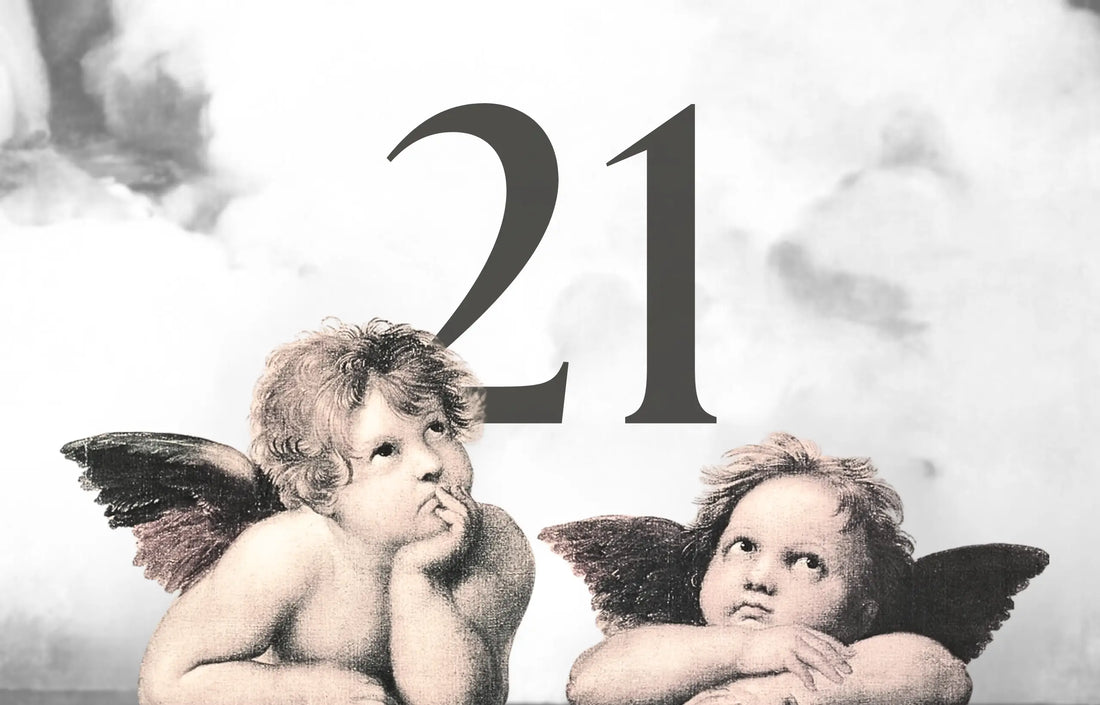The number 21 in the Bible symbolizes sin, rebellion, and divine restoration. In Judges 10:3, Israel rebelled for 21 years before deliverance. The number is also linked to intense spiritual conflict, as seen in Daniel 10:13, where an angel is delayed 21 days. These patterns reveal a spiritual process of judgment followed by breakthrough. Keep reading for deeper scriptural context and historical insights.
What Does the Number 21 Represent in the Bible?
In biblical literature, the number 21 is associated with sin, rebellion, and the threshold of restoration. It represents a culmination of spiritual struggle before a breakthrough or divine response. Unlike more frequently discussed numbers such as 7 or 12, 21 carries a less obvious but equally potent symbolic weight in Scripture.
The number is a product of 3 (divine completeness) and 7 (spiritual perfection). When multiplied, these numbers produce a symbolic tension—perfect holiness (7) subjected to divine reality (3), resulting in the final exposure of sin (21). It marks the edge where rebellion meets God's decisive intervention.
Key Biblical Appearances of the Number 21
21-Year Periods of Rebellion and Bondage
In Judges 10:3–8, Israel sins by turning to foreign gods, provoking the anger of the Lord. The text notes two periods of oppression: 18 years under the Philistines and 3 years under the Ammonites. Combined, this totals 21 years of suffering—a direct result of national rebellion.
Similarly, 2 Kings 24:18–25:7 records that King Zedekiah’s rule culminated in the Babylonian destruction of Jerusalem. Though his reign lasted 11 years, it occurred after 21 years of prophetic warnings that began under his predecessor. Israel's resistance to God's word reached a boiling point, ending in exile.
These two episodes show 21 as a number marking the full cycle of rebellion before judgment arrives.
Daniel's 21-Day Delay
In Daniel 10:13, the prophet fasts and prays for insight, only to be answered after 21 days. The angel reveals that he was hindered by the "prince of Persia"—a spiritual adversary—until the archangel Michael intervened.
This dramatic delay suggests that 21 also represents the period of intense spiritual warfare. The length of time reflects the severity of opposition faced, even by heavenly beings. The scene underscores the reality behind Ephesians 6:12, where Paul reminds us that our struggle is "not against flesh and blood but against rulers... in the heavenly places."
Theological Symbolism in Jewish and Christian Thought
21 as a Final Call Before Judgment
In rabbinic tradition, the number 21 appears in thematic catalogs of Israel's sins before exile. Jewish historian Josephus (c. 37–100 AD) notes that Israel’s decline was marked by accumulating infractions over multiple generations. Though not always quantified as 21, early Jewish readings did associate patterns of repeated rebellion leading to national downfall.
In the Christian tradition, theologians like St. Jerome (c. 347–420 AD) and Origen (c. 184–253 AD) paid little attention to 21 directly, but their exegesis on Daniel’s vision interprets the number as spiritually charged. The emphasis is often on persistence through adversity and spiritual victory rather than numerological obsession.
Echoes in the Feast Calendar
There’s a subtle connection between the number 21 and the Jewish liturgical calendar. The Feast of Tabernacles lasts 7 days, and if repeated thrice annually over three pilgrimage festivals (Unleavened Bread, Weeks, and Tabernacles), the total is 21 feast days.
This cumulative celebration of God’s provision can be seen as a redemptive counter-image to the 21 days of delay in Daniel. From a theological lens, it hints that 21 may also carry the idea of transformation—moving from struggle to rejoicing.
21 as the Pattern of Sin and Restoration
The number 20 is often associated with waiting or anticipation. For example, Jacob waited 20 years to be freed from Laban’s household (Genesis 31:38–41). But it is only after the 21st year that final freedom and restoration are secured.
In this view, 21 symbolizes the moment of divine action after the test. It is the climax of suffering or disobedience where God either brings judgment or opens the door to deliverance.
Typologically, 21 follows a pattern:
- A long phase of struggle (symbolic 20)
- A decisive act or change in the 21st phase
This model fits Israel’s bondage periods, Daniel’s angelic visitation, and even historical cycles in early Church history.
Numerology vs. Biblical Theology: A Necessary Caution
While biblical numerology can offer symbolic insight, it must not drift into mysticism. Numbers in Scripture are not talismans or codes to be decoded for secret knowledge.
Hebrew culture treated numbers functionally and contextually. The late scholar Umberto Cassuto emphasized in his writings on Genesis that numbers like 7, 10, and 40 appear rhythmically in the text to structure narratives and underscore meaning—not to invite divination.
The number 21 should be interpreted through the stories it appears in—not as a stand-alone cipher. Responsible theology avoids imposing speculative meaning and instead draws from biblical patterns and historical-theological interpretation.
Spiritual Lessons from the Number 21
21, though less prominent than other Bible numbers, reveals a compelling theme in the biblical story—rebellion met with divine intervention, prayer delayed but ultimately answered, and the turning point between discipline and redemption.
- Spiritual warfare is real: Daniel's 21-day experience reminds believers to persevere in prayer even when answers are delayed.
- Judgment has a timeline: Israel's 21 years of rebellion weren’t ignored—they led to decisive divine action.
- Restoration follows discipline: God's patterns often move from justice to mercy, if repentance follows.
It also invites modern Christians to evaluate the "cycles" in their lives. Are you in year 20 of waiting? Perhaps breakthrough is just ahead.
Ready to decode more of Scripture's numerical symbolism? Continue your journey of discovery with our full series exploring how numbers shape Scripture's deepest truths:
| 1 | 2 | 3 | 4 | 5 |
| 6 | 7 | 8 | 9 | 10 |
| 11 | 12 | 13 | 14 | 15 |
| 16 | 17 | 18 | 19 | 20 |
| 21 | 24 | 25 | 40 | 70 |














